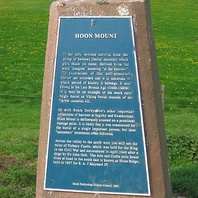
Viking Names
Hoon
Hoon, in the Appletree Hundred of Derbyshire, is a simplex place-name from haugum, the dative plural form of Old Norse haugr ‘a natural height, a hill, a heap, an artificial mound, a burial mound’, which gives the sense ‘at the barrows’. One of these barrows is now called Hoon Mount.
Read More
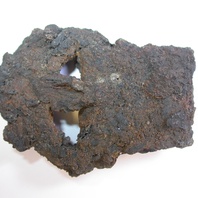
Viking Objects
Iron Buckle (1985/225-8)
An iron buckle found in Mound 6 at Heath Wood, Ingleby, Derbyshire. It is one of two iron buckles found in this burial mound together with a small number of bronze fragments and iron nails. This buckle has parallels in Scandinavia.
Read More
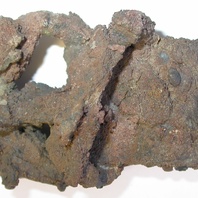
Viking Objects
Iron Buckle (1988/225-9)
An iron buckle found in Mound 6 at Heath Wood, Ingleby, Derbyshire. It is one of two iron buckles found in this burial mound together with a small number of bronze fragments and iron nails. This buckle features a strap slide secured between the backplate and two terminal rivets.
Read More
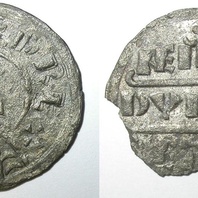
Viking Objects
Coin of Alfred the Great (1989-58/3381)
This silver penny from the mass grave at Repton was minted by a moneyer called Dudwine in Canterbury for Alfred the Great. Alfred was King of Wessex from 871 to 899 and spent most of his reign fighting off Viking invasions. He won a decisive victory at the Battle of Edington in 878 which resulted in a peace with the Vikings and the creation of the Danelaw. Minting coins was a way of controlling the means of exchange within a kingdom and which created a more easily administered standardized system of trade. Moreover, the coins themselves were often used as propaganda, portaying symbols and statements that gave off a desired message. The Vikings later used the minting of coins to legitimize their own rule.
Read More
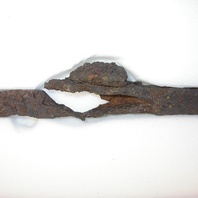
Viking Objects
Sword Fitting (1985/225-13)
This is the lower guard of a sword that may have been a Petersen Type H sword with triangular pommel. This style of sword is the most common type found in Norway and accounts for approximately 25% of those found in Ireland. It was found about 760mm from an iron sword blade in Mound 7, along with iron nails and a fragment of a possible iron spur.
Read More
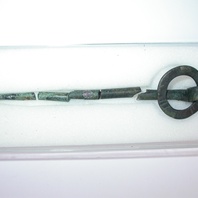
Viking Objects
Ring-headed Pin (2004-311-sf245)
This ring-headed pin was uncovered in a cremation burial which was generally unfurnished and containing little evidence. This type of pin was fairly common throughout the Viking Age and was used to hold a cloak around one’s body.
Read More
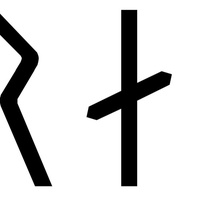
Viking Names
Grani
The male personal name Grani, or possibly Gráni, is the first element of the place-name Granby, Nottinghamshire. The name occurs sporadically in saga-literature and also appears on the rune-stone from Berezan’ in southern Ukraine, erected by visiting Swedes in the eleventh century. It is also the name of the horse of the legendary hero Sigurd the Serpent-Slayer. If the name, whether of the horse or as a male name, is Grani, then it is related to the Old Norse word grǫn, referring to the ‘upper lip’ or ‘moustache’, and can be compared to other original bynames like Skeggi from skegg ‘beard’. Alternatively, it might be related to the adjective grár ‘grey’ or verb grána ‘to grow grey’, and would similarly have originally been a descriptive byname. In Granby, a document from c. 1200 refers to Granehou, a mound (Old Norse haugr) possibly named after the same man who gave his name to the village.
Read More
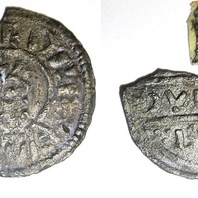
Viking Objects
Coin of Burghred of Mercia (1989-58/3650)
A silver penny of Burghred of Mercia, found in the mass grave at Repton, minted by the moneyer Dudwine. Dudwine may be the same moneyer who was minting coins for Alfred the Great at a later date. Burghred was king of Mercia from 852-874 CE. He was driven out of Mercia by the Vikings during their march from Lindsey to Repton in 874 after they sacked Tamworth. Burghred fled to Rome, where he eventually died, and was replaced by Ceowulf II who was loyal to the Vikings. Minting coins was a way of controlling the means of exchange within a kingdom and which created a more easily administered standardized system of trade. Moreover, the coins themselves were often used as propaganda, portaying symbols and statements that gave off a desired message. The Vikings later used the minting of coins to legitimize their own rule.
Read More
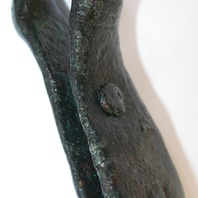
Viking Objects
Suspension Loop (1985/225-1)
This copper-alloy suspension loop was found in Mound 1 at Heath Wood, Ingleby and was probably part of a sword belt. The loop is wide enough for a doubled strap to pass through, so it may have been used to suspend the scabbard from the belt. It has been suggested that this one was probably Anglo-Saxon in origin, because this style is not known from Scandinavia, but that did not stop a Viking acquiring it and being buried with it.
Read More
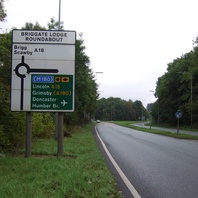
Viking Names
Scawby
Scawby, in the Manley Wapentake of Lincolnshire, likely comes from the Old Norse male personal name and byname Skalli, related to Old Norse skalli ‘a bald head, a bald-headed person’ and bý ‘a farmstead, a village’. Alternatively, skalli could be used to describe a bald hill. In the neighbouring parish of Broughton the minor names Scalehou and Scallehou were recorded in the twelfth and thirteenth century, the first element being the same Old Norse personal name with Old Norse haugr ‘mound’. Likely the Skalli of Skal(l)ehou was the same person as Skalli of Scawby.
Read More
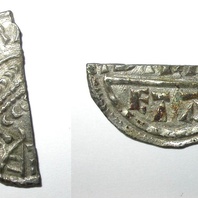
Viking Objects
Coin of Burghred of Mercia (1989-58/3723)
A silver penny of Burghred of Mercia, found in the mass grave at Repton, minted by the moneyer Dudda, probably in London. Burghred was king of Mercia from 852-874 CE. He was driven out of Mercia by the Vikings during their march from Lindsey to Repton in 874 after they sacked Tamworth. Burghred fled to Rome, where he eventually died, and was replaced by Ceowulf II who was loyal to the Vikings. Minting coins was a way of controlling the means of exchange within a kingdom and which created a more easily administered standardized system of trade. Moreover, the coins themselves were often used as propaganda, portaying symbols and statements that gave off a desired message. The Vikings later used the minting of coins to legitimize their own rule.
